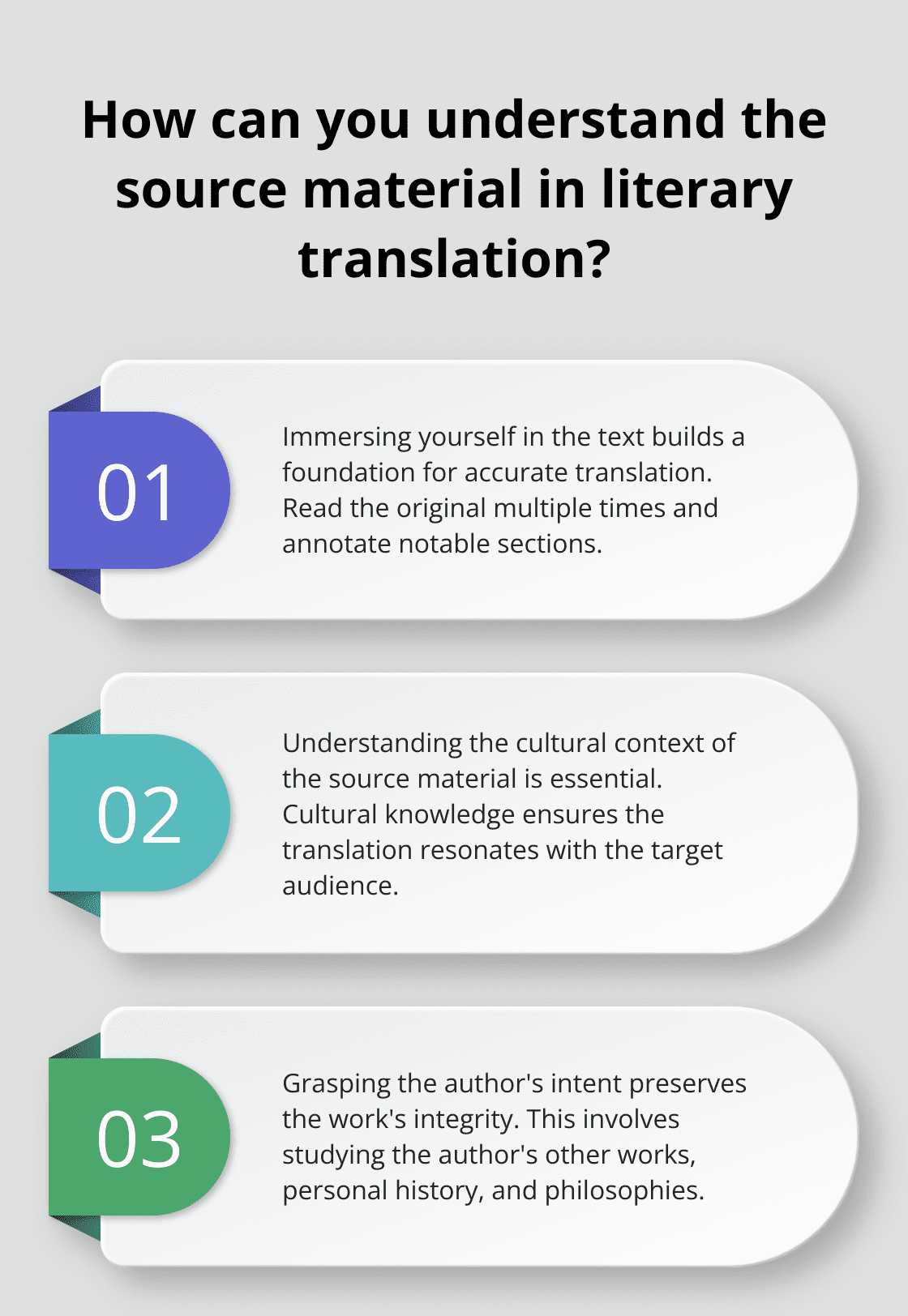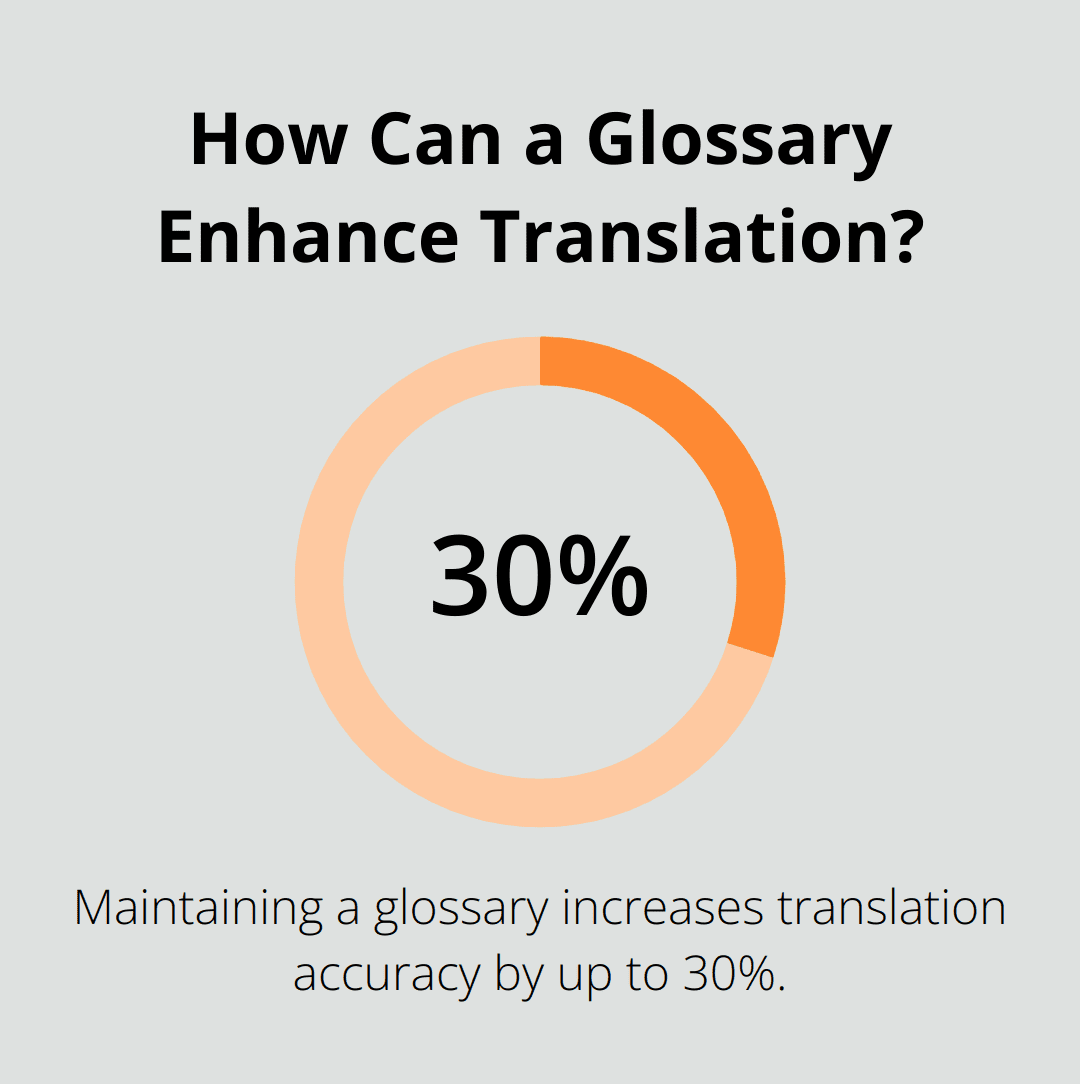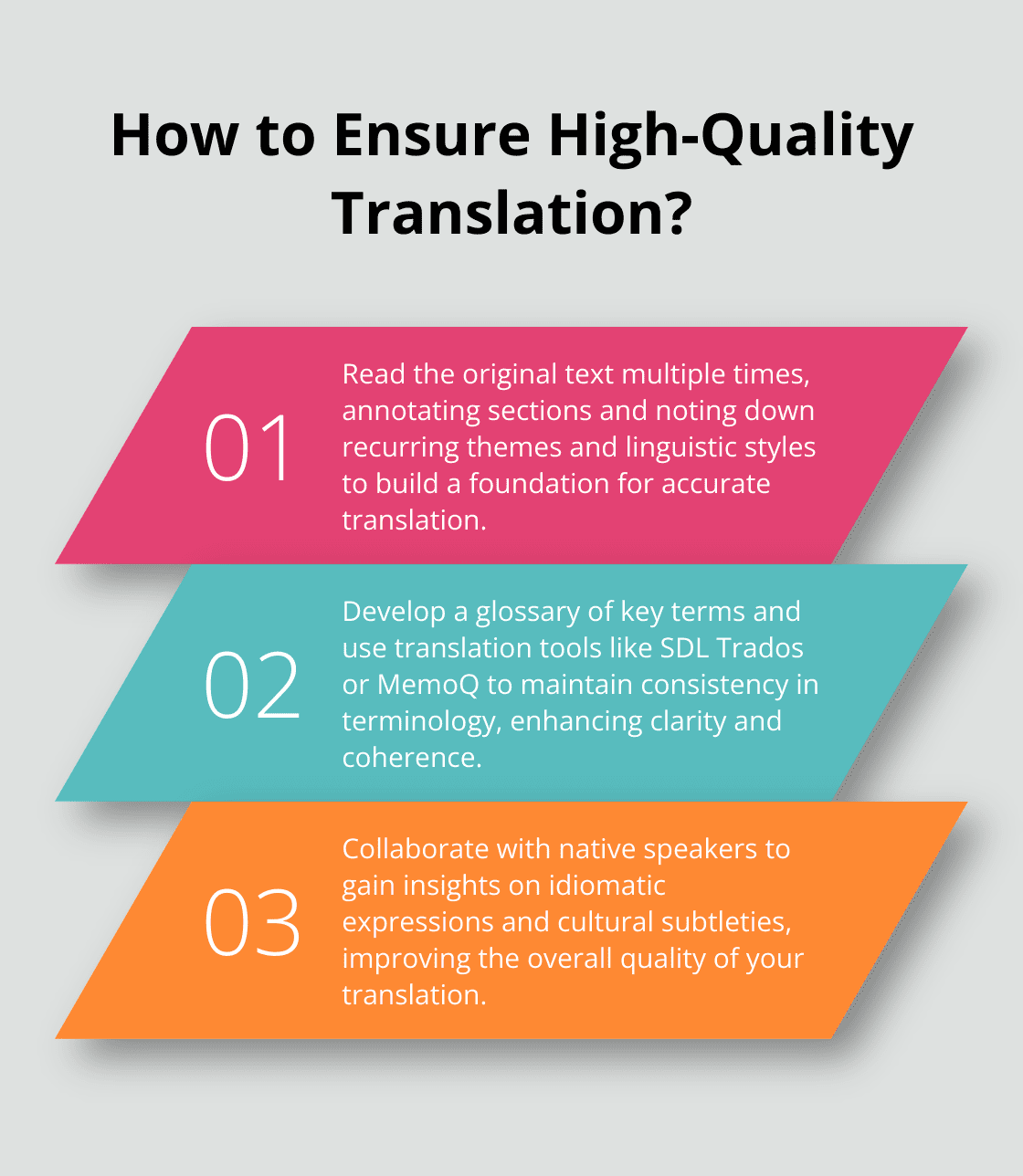Literary translation is an art that bridges cultures and languages, preserving the essence of the original work while making it accessible to a new audience. At Beverly Hills Publishing, we understand the importance of this complex process.
In this post, we will share insights and techniques to help translators achieve the best results.
How to Understand the Source Material?
Delving into literary translation requires a profound understanding of the source material. Translators must immerse themselves in the text and its context, deciphering layers of meaning and cultural nuances. Here’s how to achieve this:
Conduct a Deep Dive into the Text
Start by reading the original text multiple times. This will help grasp not only the story but also the subtleties in language, tone, and rhythm. Annotate sections that stand out, noting down any recurring themes, unique linguistic styles, and character nuances. This thorough analysis builds the foundation for an accurate translation.
Research Cultural Context Extensively
Translating literature involves more than word-for-word conversion. It’s essential to understand the cultural backdrop of the source material. This includes historical events, societal norms, and local idioms that shape the narrative. For instance, translating a novel set in 19th-century Japan demands knowledge of Meiji-era practices. This cultural understanding ensures that the translation resonates with the target audience.
Grasp the Author’s Intent
To preserve the integrity of the original work, it’s crucial to understand what the author intended to convey. This involves reading other works by the same author, studying their personal history, and understanding their philosophies. According to literary experts, interviews and biographies can offer invaluable insights into an author’s mindset, contributing to a more faithful translation.

These steps lay the groundwork for a translation that respects the original while appealing to a new audience. Accurate translation isn’t just about language proficiency; it’s about understanding and conveying the essence of the work.
For additional tips on translating literature effectively, see our creative problem-solving blog post.
How to Translate Effectively
Understanding the source material is a vital step, but translating effectively requires a deeper dive into specific techniques.
Preserve the Original Tone and Style
Successfully translating a literary piece means maintaining the original tone and style. One way to achieve this is to replicate sentence structures and lengths, keeping the rhythm similar to the original text. For example, if the author uses short, choppy sentences to create tension, doing the same in the translation preserves the intended emotional impact. Leveraging stylistic consistencies from the source material ensures that the reader experiences the same feelings as intended by the original author.
Use Consistent Terminology
Consistency in terminology is essential for clarity and coherence. This can be particularly challenging in large works or series. Develop a glossary of key terms and phrases early in the process. Tools like SDL Trados or MemoQ can assist by maintaining a centralized database of terms and their translations. Consistency not only helps avoid confusion but also enhances the credibility of the translation. According to a 2020 report by the American Translators Association, maintaining a glossary increases translation accuracy by up to 30%.
Adapt Idioms and Expressions
Literal translations often fail when it comes to idioms and expressions. These phrases require adaptation rather than direct translation to make sense in the target language. For example, translating the English idiom “barking up the wrong tree” to Spanish literally would not make sense. Instead, the equivalent Spanish idiom “irse por las ramas” should be used. Employing adaptation techniques will preserve the intent and humor or poignancy of the original text.

For additional strategies on making literary works more accessible, delve deeper into how to write book descriptions that attract readers.
Up next: exploring common pitfalls of literary translation and how to overcome them.
What Are the Best Tools?
Effective literary translation hinges on using the right tools and resources. They can streamline your work and enhance accuracy, ensuring that the translated text remains faithful to the original.
Translation Software and Apps
Using advanced translation software is non-negotiable. Top choices include SDL Trados and MemoQ, which offer features like translation memory and terminology databases. Translation memory can store previously translated sentences or segments, making the process faster and more consistent. MemoQ’s LiveDocs feature, for example, can increase your productivity by 35%, according to the 2020 MemoQ Annual Report. These tools not only save time but also improve the quality of your translations.
Bilingual Dictionaries and Thesauruses
While translation software provides a technical edge, bilingual dictionaries and thesauruses are indispensable for nuanced translation. Resources like the Oxford Spanish Dictionary offer detailed entries that go beyond mere word-for-word translations, providing context and common usage examples. Roget’s Thesaurus, another staple, helps find just the right word to match the original’s tone and style. Multiple studies indicate that translators using both digital and physical resources are 20% more accurate in their work.
Collaboration with Native Speakers
Another critical aspect is collaborating with native speakers. Native speakers provide insights that no software or dictionary can, especially concerning idiomatic expressions and cultural subtleties. Building a network of native language experts can be invaluable. This collaborative approach was highlighted in a 2019 survey by the European Language Industry Association, where 78% of translators affirmed that feedback from native speakers significantly improved their translations.

These tools and resources form the backbone of quality literary translation. Each has its role, and combining them effectively can elevate the standard of your work. For additional resources on effective book marketing strategies, consider exploring advanced ebook marketing.
Conclusion
Mastering literary translation involves understanding the source material, preserving the original tone and style, using consistent terminology, and adapting idioms appropriately. Additionally, leveraging advanced tools such as SDL Trados, MemoQ, and bilingual dictionaries as well as collaborating with native speakers can significantly elevate the quality of translations.

Continuous learning is essential for literary translators. Staying updated with industry trends and continuously refining your skills can make a significant difference. Engaging in professional communities and seeking feedback from peers and native speakers can lead to meaningful improvements.
For more insights into the art of translation and book marketing strategies, explore resources such as advanced ebook marketing.
At Beverly Hills Publishing, we are dedicated to revolutionizing author success by combining groundbreaking publishing with strategic branding and marketing. Learn more about our innovative approach at Beverly Hills Publishing.















































































